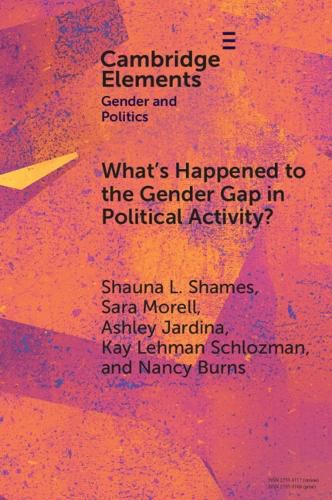Readings Newsletter
Become a Readings Member to make your shopping experience even easier.
Sign in or sign up for free!
You’re not far away from qualifying for FREE standard shipping within Australia
You’ve qualified for FREE standard shipping within Australia
The cart is loading…






This Element considers recent changes to the long-standing pattern in US politics that women are less politically active than men. On one hand, the gender gap in political activity beyond voting has disappeared. On the other, the disparity remains when it comes to political money. What is the explanation? The Element begins with politics - both the long-term increase in women occupying political positions and the way that trends/events like MeToo, the defeat of Hillary Clinton, and Donald Trump's performative masculinity made gender salient. It then turns to social structural changes, examining in particular women's relative gains in income and, especially, education. Paying consistent attention to intersectional differences among men and among women, whether based on political party, race, or ethnicity, the authors find the explanation of these trends to be rooted not in politics, but rather in social structure. This title is also available as Open Access on Cambridge Core.
$9.00 standard shipping within Australia
FREE standard shipping within Australia for orders over $100.00
Express & International shipping calculated at checkout
This Element considers recent changes to the long-standing pattern in US politics that women are less politically active than men. On one hand, the gender gap in political activity beyond voting has disappeared. On the other, the disparity remains when it comes to political money. What is the explanation? The Element begins with politics - both the long-term increase in women occupying political positions and the way that trends/events like MeToo, the defeat of Hillary Clinton, and Donald Trump's performative masculinity made gender salient. It then turns to social structural changes, examining in particular women's relative gains in income and, especially, education. Paying consistent attention to intersectional differences among men and among women, whether based on political party, race, or ethnicity, the authors find the explanation of these trends to be rooted not in politics, but rather in social structure. This title is also available as Open Access on Cambridge Core.